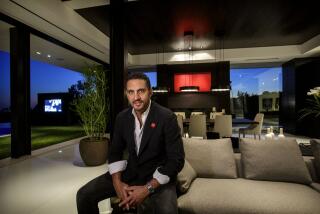Eminent Law Firm Must Pay $2 Million in Malpractice Suit
- Share via
A leading San Diego law firm was found liable of malpractice Monday and ordered to pay more than $2 million to a man who said the firm’s negligence caused him to lose a small fortune.
The San Diego County Superior Court jury’s decision, which, under an agreement, is binding on both sides, ended a nine-year legal nightmare for Merrill Frank (Bob) Murray, 62, of San Diego.
Despite the victory, the verdict was bittersweet for Murray. Even without taking inflation into consideration, the jury’s $2.2-million judgment is $1.3 million less than what Murray was worth nine years ago.
The jury also found that Murray is 8% liable for his financial downfall, which put Jennings, Engstrand & Henrikson’s liability at just more than $2 million. The law firm is one of San Diego’s oldest and most prestigious, with offices in downtown and Mission Valley.
Murray’s malpractice suit has its legal roots in 1989, when U.S. Bankruptcy Judge John J. Hargrove issued a scathing 91-page ruling in which he accused Jennings’ lawyers of unethical conduct while working on Murray’s bankruptcy case.
Murray, whose assets were in real estate valued at about $3.5 million in 1982, hired Jennings that year in order to seek protection from creditors.
In 1988, six years after the bankruptcy petition was filed, Murray’s new attorney, William Rathbone, explained to the judge how Murray “could walk into the offices of Jennings, Engstrand & Henrikson with $3.5 million worth of assets and now appear before this court . . . penniless and living below the poverty level.”
Murray hired Rathbone after Jennings presented him with a legal bill the size of a telephone directory, for $202,523.84 worth of work the firm did on the botched bankruptcy.
The Jennings attorneys were found, among other things, to have made illegal payments to some of Murray’s creditors and to have established secret bank accounts, resulting in Murray losing the holdings he had sought to protect.
After Murray sued in federal Bankruptcy Court to keep from paying the bill, Jennings announced it would seek an additional $136,000 from Murray for the money the firm spent to defend itself against his 1988 lawsuit.
Seven months later, Hargrove ruled that Jennings was not entitled to collect attorneys’ fees because of its negligence. Hargrove said Jennings’ own attorneys, who were called as witnesses, lied in their testimony.
Hargrove’s ruling opened the door for a malpractice suit filed against Jennings in Superior Court.
Under an agreement worked out with the help of Superior Court Judge Michael Greer, who presided over the trial, both sides were prohibited from discussing the case with the press.
However, Murray made his displeasure over the verdict known to jurors afterward.
He told jurors that Jennings’ trial attorneys requested that both sides be muzzled, following a lengthy article about his case that appeared in The Times in 1989. Murray also said both sides had agreed to a $2.5-million settlement last year, but that the agreement was voided by Jennings’ malpractice insurer.
In a telephone interview after the verdict, Jennings managing partner, Michael Cowett, confirmed the failed settlement agreement and said that Monday’s judgment will be paid by the firm’s malpractice insurer.
Cowett also said the attorneys who worked on Murray’s bankruptcy case, Keith McWilliams and Jack Cohen, no longer work for the firm.
“All of the legal work was done by attorneys who are no longer employed by the firm. . . . As far as we’re concerned, this is ancient history,” he said.
The complicated trial occurred under an unusual agreement engineered by Greer. The judge pushed both sides to agree to strict parameters in the length of witness testimony and streamlined evidentiary issues, by getting both sides to agree to as many undisputed facts and legal issues as possible.
In addition, Greer got both sides to agree that the jury’s verdict would not be appealed.
The agreement kept the trial to six days, when it could have gone more than 40 days.
More to Read
Inside the business of entertainment
The Wide Shot brings you news, analysis and insights on everything from streaming wars to production — and what it all means for the future.
You may occasionally receive promotional content from the Los Angeles Times.










